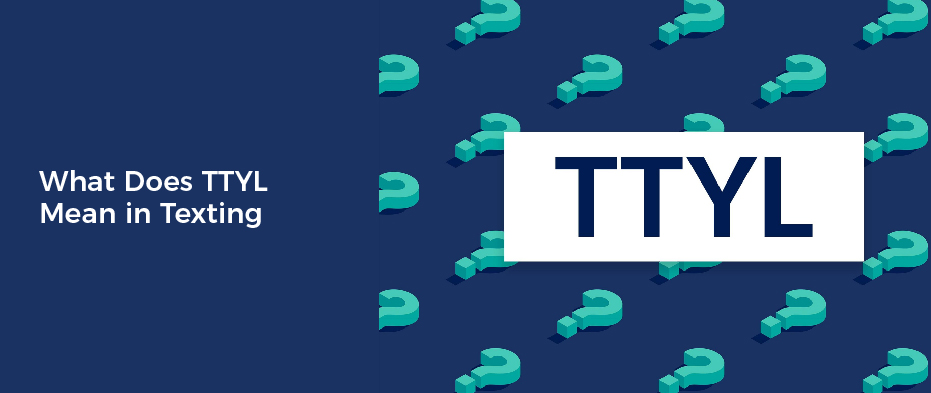You’ve been texting your friend for a while, but there are a few questions that you may have. You’re probably wondering what the meaning of ttyl in texting is.
TTYL, or “talk to you later,” is a common acronym used in texting and online communication. While the exact origins of this term are unknown, it is believed to have first appeared in the early 2000s as a short way to say “talk to you later.” Today, TTYL is often used simply as a casual response to emails or text messages and is typically accompanied by a winking or smiley emoji.
TTYL Mean in Texting- “Talk to You Later”
TTYL is an acronym that is commonly used in online text messaging. It is a short form for the more formal and albeit less sexy “talk to you later.” You’ll often see it in a text message as a sign-off to the conversation.
The acronym is also used to sign off to someone on a social media site and is sometimes even used to start a discussion. If you’re a heavy user of Facebook, Twitter, or other social media sites, you’ll certainly be exposed to TTYL.
Like many acronyms, TTYL can be used in either upper- or lower-case letters. It’s a fun acronym to use, as you don’t always know where your message will end up. Unlike its more formal counterparts, you can get away with it if you’re in a hurry. This is the best time to use it because you’ll be able to make more eye contact with the other person, and you won’t feel guilty about it.
Where Did TTYL Come from?
TTYL is an acronym that is widely used in texting and online communication, particularly among teenagers and young adults. While its exact origins are unclear, it is believed to have first appeared sometime in the early 2000s to shorten the phrase “talk to you later.” Today, TTYL is often used simply as a filler or casual response to emails, texts, or other messages and is typically accompanied by a winking or smiley emoji to indicate that the message was meant in jest.
How Do You Use TTYL in Texting?
There is no one “correct” way to use TTYL, as its meaning can vary depending on the context and situation. However, it is typically used in informal settings or when communicating with someone you know well, such as a friend or family member. Some popular ways to use TTYL include:
- Responding to text messages or emails.
- Signing off in online conversations, such as on social media platforms like Facebook and Twitter.
- Using it as an expression of excitement or mild amusement, similar to phrases like “OMG” or “LOL.”
If you’re unsure how to use TTYL or are worried about overusing it in your messaging, it’s important to remember that context is key. Pay attention to the tone and style of messages you’re responding to, and always try to use TTYL in a way that feels natural and appropriate for your situation.
Common Ways to Say Goodbye While Texting
When it comes to texting, there are plenty of options for goodbyes. However, the word ‘goodbye’ can be tough to say for long periods. So, here are some of the most common ways to say goodbye.
- A ‘take it easy’ may sound old-fashioned, but this phrase is a good way to wish someone well. Whether you’re talking to a friend or a co-worker, taking a break to do some deep breathing is usually a good idea.
- The ‘fare thee well’ is a slightly more formal way to say goodbye. This is a great phrase for colleagues or friends who are going to see each other again soon.
- “Toodles” is a popular and clever way to say goodbye, but it’s not as formal as the word you are looking for. Similarly, there’s long’ is more ambiguous than the ‘fare thee well.’
Avoid Abbreviations in Texting
Texting abbreviations are common and have been around for many years. However, they can be a bit confusing, especially if you are unfamiliar with the meaning. You might accidentally send the wrong message to a customer. Using abbreviations can help you to avoid that, but you must ensure that you are using them correctly.
When you are putting together a text message, it is a good idea to make sure that the acronyms you use are clear and readable. This can be done by keeping the content of the message in mind. There are also options for adding images to your text message to convey a point more clearly than words.
Before you begin a text conversation, check your dictionary to ensure you know what the abbreviations mean. If you are unsure of the pronunciation, ask a friend or colleague. Also, be sure to type out the full version of the word. That way, it will be easier for your audience to read.


